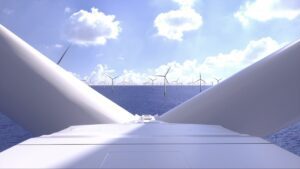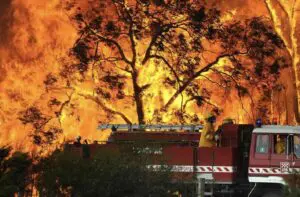At the end of July, the Australian Energy Market Operator (AEMO) released the final version of its 2020 Integrated System Plan (ISP). It is based around five scenarios, each of which is based on a plausible combination of economic and social factors.
Each combination yields a particular mix of demand for electricity and supply from wind and solar generation, based on the relative costs of generation from each source, i.e. continued functioning of the National Electricity Market as it operates today.
Demand and renewable generation then determine the utilisation of legacy coal, gas and hydro generation capacity. None of the five scenarios includes any new coal, gas, or hydro (as distinct from pumped storage) power stations.
It is important to emphasise than none of these scenarios is a forecast or projection and neither are they the output of a model, other than the simple constraint that supply must match demand at all times and at all locations.
The objective of the sophisticated modelling used by AEMO in developing the ISP is to determine the mix and timing of new investment in transmission, firming capability (storage etc.) and other grid infrastructure that will be required, under each scenario, to provide a secure
and reliable supply of electricity at least cost to consumers.
Under four of the five scenarios demand is assumed to increase at an average rate of between about 0.4% and 0.6% per annum over the period from 2020 to 2042 (one scenario has much slower demand growth). There is relatively modest growth in use of electric vehicles. Rates of consumer switching from gas to electric technologies for low temperature heat supply (space heating and hot water) are also fairly modest.
There is no closure of major industrial loads (meaning aluminium smelters). However, shares of variable or non-dispatchable generation, i.e. wind and solar generation, increase strongly. Under what is called the Central scenario, the variable generation share of total generation (excluding generation output from storage, to avoid double counting) reaches 70% in 2042, up from just under 18% in 2020.
The share of coal generation falls from 67% in 2020 to about 25% in 2042. Under the scenario with the largest fall in emissions, called Step Change, variable generation reaches 103% by 2042. The percentage is above 100% because some energy generated is lost in storage cycling.
Under this scenario, coal generation is 2.5% in 2042 and gas generation is 1.6%. Nearly 11% of electrical energy supplied to consumers comes from storage, including both pumped hydro and batteries, including behind the meter batteries linked to rooftop solar.
The reason for focusing on this aspect of the ISP is that the variability of wind and solar generation is the argument conservatives have been using for years to support the retention and, in extreme cases expansion, of coal generation.
The many fallacies of this argument have been previously examined in the NEEA Report. More recently, a strong push for increased supply of natural gas, including, if necessary, public funding of gas pipelines, has been based on arguments that more gas generation will be required to support variable renewable generation.
The ISP supports the argument that gas generators “will continue to play a critically important role in the NEM” (p.53). However, the results do not support the argument that a greater volume of gas will be required.
On the contrary, under all five scenarios, total annual gas generations falls rapidly, from over 8% of total NEM generation in 2020, to under 2% by 2025, or earlier, and remains not far above that level for the remainder of the projection period. It is mainly the cost of gas which makes gas generation, which will always be crucially important, only a small source of generation in volume terms.
Obviously, unless either additional gas production diverted to LNG exports, or existing production sources collapse, no new gas production will be needed for electricity generation under any of the ISP scenarios.
What is more, because of the relatively high cost of gas, both now and under all foreseeable futures, any policy which forces up the volume of gas generation can only force electricity prices up also.
The total annual volume of gas generation is so small because only small quantities of electricity are required to be supplied by gas generators each year. The major “critically important role” of gas generation in the NEM occurs when the weather in south eastern Australia is both cloudy and still for several successive days, causing both solar and wind generation to fall to low levels.
AEMO terms such periods VRE (variable renewable energy) ‘droughts’; they occur in winter, typically on only a few occasions each year. During 2020, from May to late August, there were two such periods: one during the first week of June and another during the second week of July.
The other use of gas generation occurs on some individual days, when renewable generation is at low levels and demand is at high levels, for a few hours in the early evening. Shorter periods of low wind generation are more frequent and solar generation is of course zero for precisely half the hours in every year.
Under all the ISP scenarios, the increasing need for firming functionality for these periods is mostly met by a mix of batteries and pumped hydro, including the existing pumped hydro stations in New South Wales and Queensland.
Installation of new pumped hydro and battery capacity is projected to be important under all scenarios. Under all ISP scenarios Snowy 2.0 is defined not as new investment specified as least cost options by the modelling, but as a committed project which will definitely be commissioned in 2025.
Under all but the rapid transition Step Change scenario, however, Snowy 2.0 is not much used until the early 2030s, some years after it is assumed to be commissioned. Throughout the intervening period, coal fired generation will be the marginal source of electricity for pumping.
This means that the modest use of Snowy 2.0 to provide firming support for variable renewable generation will cause more greenhouse gas emissions than would making greater use of idle gas generators.
Of course it is not possible to be certain about alternative outcomes without a complete modelling run with changed scenario specifications. However, it seems almost certain that, even under a rapid transition to a low emission future for the NEM, the least cost path would not see Snowy 2.0, or alternative pumped storage options, commissioned until the early 2030s, at the earliest.
This is an extract of Hugh Saddler’s The Australia Institute’s National Energy Emissions Audit Report, for August/September 2020, published on Thursday November 5.








